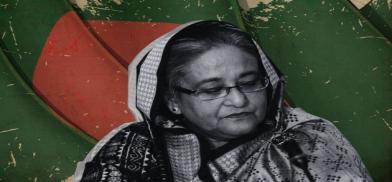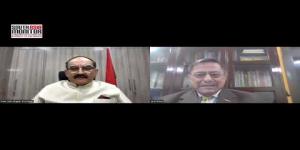Hasina’s legacy: Stellar growth marred by political stagnation, stalled democracy
The considerable economic progress under Hasina's governance starkly contrasts with the stagnation in political reforms. Persistent issues such as limited press freedom, corruption, and inadequate improvements in democracy, rule of law, and human rights have marred her administration’s record

On August 5, Sheikh Hasina resigned and left Bangladesh following months of intense protests and violence sparked by her government’s controversial decision to implement a quota system, bringing an end to her 15-year unbroken reign as Prime Minister. To understand the forces behind her ouster, it is crucial to analyze the state of Bangladesh’s economy under her leadership. Was her ouster primarily a result of economic mismanagement, or were there other factors at play? A thorough review of the economic indicators during Hasina’s tenure will provide deeper insights into the complexities of her governance.
Economists frequently debate which indicators best capture a country’s economic health, but GDP per capita, unemployment rate, and inflation consistently rise to the top as crucial measures. Taking Bangladesh as a case study, its economic narrative over the past decade reveals much through these lenses.
Since January 2009 to 2024 Sheikh Hasina ruled in Bangladesh. From 2010 to 2023, Bangladesh exhibited a strong economic performance with an average GDP growth of 6.38%, ranking it among the fastest-growing economies in its region. The GDP per capita growth rate of 5.14% indicates significant improvements in individual income and living standards. Despite these gains, the country grappled with a high inflation rate of 6.97%, impacting the cost of living. However, the unemployment rate remained moderate at 4.59%, reflecting a relatively healthy job market. Overall, Bangladesh led in GDP growth and per capita gains in South Asia, with inflation rates near the regional average. It ranked third lowest in unemployment in South Asia, behind Bhutan and Pakistan, highlighting its stable job market amidst economic challenges.
In 2010, Bangladesh’s GDP per capita stood at a modest $776, significantly trailing the South Asian average of $1,254. By 2018, however, Bangladesh had not only caught up but surpassed the regional average by $40. Fast forward to 2023, and the gap widened further with Bangladesh’s GDP per capita climbing to $2,529.08, surpassing the South Asian norm of $2,308.72. This trajectory highlights Bangladesh’s robust economic growth and its rising prominence within the South Asian economic landscape.
High inflation and unemployment
Initially, Bangladesh saw inflation surge to nearly 10% in 2011, well above the South Asian average. It subsequently managed to rein in these rates, dipping below the regional average by 2014. By 2022, however, inflation climbed again, reaching 9.88%, above the South Asian mean of 8.50%. Throughout this period, Bangladesh’s inflation rate had typically matched or fell below the regional average, reflecting a broadly stable economic environment compared to its neighbors.
Bangladesh’s unemployment rate during the ruling period Sheikh Hasina was consistently lower than the South Asian average, maintaining a stable level around 4% until around 2016. However, around 2017, the unemployment rate in Bangladesh began to rise steadily, reaching a peak in 2020. By 2022, the unemployment rate in Bangladesh showed a significant decrease but remained above the South Asian average, concluding the period at around 5.06% compared to South Asia’s 4.61%. This overall trend suggests that while Bangladesh managed to maintain a competitive edge in employment rates early in the decade, it faced challenges that led to higher unemployment rates towards the end.
Under the stewardship of Sheikh Hasina, Bangladesh experienced a remarkable phase of economic growth, a narrative closely intertwined with the Vision 2021 manifesto of the Bangladesh Awami League. Envisioned prior to their victory in the 2008 national elections, Vision 2021 was a blueprint designed to elevate Bangladesh to a middle-income status by the year 2021, coinciding with the 50th anniversary of its independence. True to these ambitious goals, Bangladesh transitioned from a low-income to a lower-middle-income country in 2015, surpassing a GNI per capita threshold of $1,145. By the end of her tenure, Bangladesh’s GNI per capita had impressively surged from $800 to $2,860, marking a significant economic upturn under her leadership. This transformation underscores a period of sustained growth and development, highlighting the profound impact of strategic governance and visionary policy-making.
Economic growth, political stagnation
Under the leadership of Sheikh Hasina, while Bangladesh’s economy showed notable progress, its political landscape remained relatively stagnant. Despite a 15-year tenure, Hasina’s administration struggled to enhance political frameworks effectively. Critical areas like democracy enhancement, corruption control, rule of law, press freedom, and freedom of speech saw limited or no improvement. The Democracy Index 2023 places Bangladesh as the 75th globally, continuing to label it a “hybrid regime”—a classification unchanged since 2008. The Corruption Perception Index ranks the country disappointingly low at 149th out of 180. In terms of legal structure, Bangladesh stands at the 30th percentile in rule of law, lagging significantly behind India’s 55th percentile. Press freedom too has deteriorated, with the Press Freedom Index 2024 ranking it 165th globally, a drop from the previous year. Additionally, it ranks 128th out of 161 in the Global Expression Report. This stagnation in political reforms starkly contrasts with the economic strides made during the same period.
Sheikh Hasina has faced criticism for various issues during her tenure. Her authoritarian tendencies are evident as critics claim her government has suppressed dissent, limited press freedom, and silenced political opposition through law enforcement. Additionally, political polarization has intensified, marked by deep divides between her Awami League and the opposition, occasionally leading to violence and unrest. Human rights issues have also been prominent, with concerns over extrajudicial killings, enforced disappearances, and restricted civil liberties. Corruption remains a persistent challenge, with allegations of graft and nepotism eroding public trust.
Despite the economic strides under Sheikh Hasina’s leadership, marked by significant improvements in GDP growth and per capita income, her tenure was not without its political shortcomings. The considerable economic progress under Hasina's governance starkly contrasts with the stagnation in political reforms. Persistent issues such as limited press freedom, corruption, and inadequate improvements in democracy, rule of law, and human rights have marred her administration’s record. Moving forward, Bangladesh needs to address these political deficits to ensure that the benefits of its economic growth are not undermined by governance challenges. Strengthening democratic institutions and enhancing transparency and accountability are imperative to sustaining the nation’s developmental gains and ensuring a balanced growth trajectory.
(The author is a Pakistan-based economist working as a Senior Lecturer, School of Economics and Finance, Minhaj University Lahore, Pakistan. Views are personal. He can be contacted at waqas.eco@mul.edu.pk / waqasshair689@gmail.com )










Post a Comment